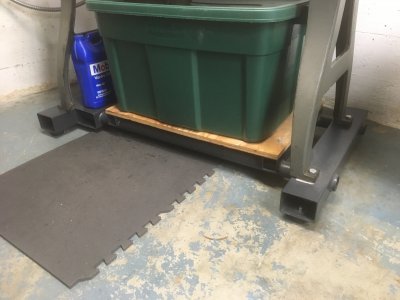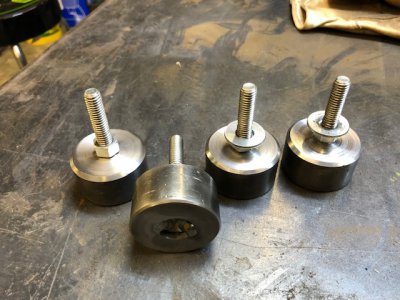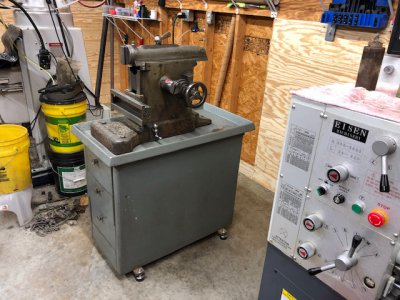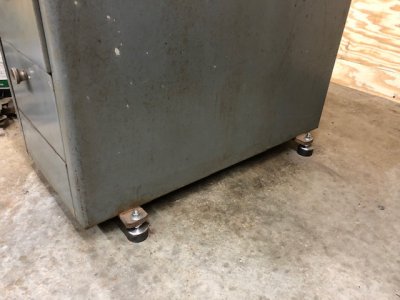- Joined
- Sep 22, 2019
- Messages
- 1,049
OK Guys...
So this is where I want the 9A to live.
Close to a power source and light.
Only issue is, where it sits now on these dollies, is really a comfortable height for me.
What to do about securing it there, at this height, about 37" to the top of the chip tray, is the question.
The dollies are/were for moving it around in the shop for the present, temporary at best!
I suppose pouring a solid concrete base secured to the floor would be one answer, but that, for me, would be the last option
so I am open for suggestions here.
Thanks!
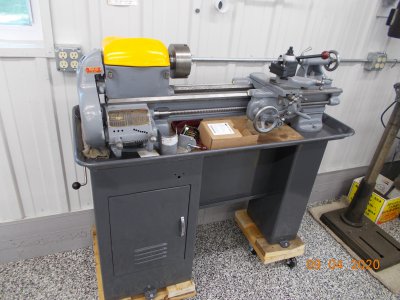
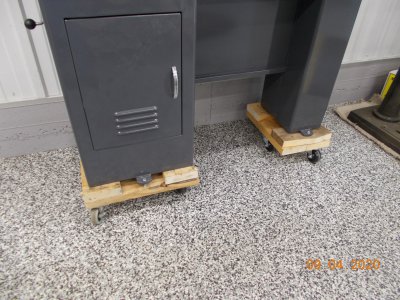
So this is where I want the 9A to live.
Close to a power source and light.
Only issue is, where it sits now on these dollies, is really a comfortable height for me.
What to do about securing it there, at this height, about 37" to the top of the chip tray, is the question.
The dollies are/were for moving it around in the shop for the present, temporary at best!
I suppose pouring a solid concrete base secured to the floor would be one answer, but that, for me, would be the last option
so I am open for suggestions here.
Thanks!



